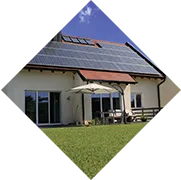Innovative Bifacial Double Glass Solar Modules for Enhanced Energy Efficiency
Bifacial Double Glass Modules The Future of Solar Energy
In the quest for sustainable energy solutions, solar photovoltaic (PV) technology has emerged as one of the most promising avenues. Among the various innovations in solar technology, bifacial double glass modules stand out as a remarkable advancement, offering enhanced efficiency, durability, and versatility. This article explores the unique features and benefits of bifacial double glass modules, positioning them as a critical component of future solar energy systems.
What are Bifacial Double Glass Modules?
Bifacial double glass modules are solar panels designed with glass on both the front and rear sides. Unlike conventional solar panels, which typically have a glass front and a polymer back, bifacial panels allow sunlight to reach the solar cells from both sides. This design maximizes the absorption of sunlight, especially in environments where reflective surfaces, such as snow, sand, or water, can bounce additional sunlight onto the rear side of the panels.
Enhanced Efficiency
One of the primary advantages of bifacial double glass modules is their ability to achieve higher energy production. Research indicates that bifacial panels can increase energy yield by 10% to 30% compared to traditional monofacial panels, depending on the installation environment. This is particularly significant for large-scale solar farms, where even a small increase in efficiency can translate into substantial economic benefits.
The efficiency gain stems from two main factors the bifacial design allows for dual-side sunlight capture, and the transparent glass back enhances light reflection and diffusion. Additionally, the use of high-efficiency solar cells in these panels further contributes to their superior performance, making them an attractive option for both commercial and residential applications.
Durability and Longevity
Bifacial double glass modules are also lauded for their durability. The use of glass on both sides offers improved resistance to environmental stressors, such as hail, wind, and temperature fluctuations. Traditional polymer backs are more susceptible to wear and tear over time, often leading to delamination and performance degradation. In contrast, the double glass structure provides a robust barrier against such elements, ensuring longer operational lifespans, often exceeding 30 years.
bifacial double glass module

Furthermore, many bifacial modules are designed to withstand a higher level of mechanical stress due to rigorous testing standards including impact resistance and anti-corrosion properties. This durability not only reduces the need for maintenance and replacement but also enhances the overall reliability of solar energy systems.
Environmental Impact
From an environmental perspective, bifacial double glass modules have several benefits. The glass used in these panels is typically recyclable, contributing to the overall sustainability of solar technology. Moreover, by harnessing more energy from the same surface area, they promote more efficient land use. This is crucial as the demand for renewable energy grows, ensuring that we can meet our energy needs while minimizing impacts on natural habitats.
Additionally, their high energy output leads to lower carbon emissions over the lifecycle of the panels, supporting global efforts to combat climate change. As countries aim for net-zero emissions, integrating bifacial technology into solar infrastructures could play a key role in achieving these goals.
Implementation and Adoption
The adoption of bifacial double glass modules is on the rise, thanks to technological advancements, decreasing manufacturing costs, and growing awareness about the benefits of renewable energy. They are becoming increasingly popular in utility-scale solar projects, commercial rooftops, and even residential installations.
As installers gain experience and expertise in deploying bifacial technology, the performance metrics are expected to improve further. Government incentives and supportive policies worldwide also bolster the transition towards this innovative solar solution.
Conclusion
Bifacial double glass modules represent an exciting development in solar technology, offering enhanced efficiency, durability, and environmental benefits. As the world continues to pivot towards sustainable energy solutions, these modules are poised to play a significant role in shaping our energy future. By maximizing both energy output and resource efficiency, bifacial double glass technology will help pave the way for a cleaner, greener planet while making solar energy more accessible and economically viable for all.
-
String Solar Inverter: The High-Efficiency Solution for Smart Solar EnergyNewsJul.14,2025
-
Revolutionizing Rooftop Energy with the Power of the Micro Solar InverterNewsJul.14,2025
-
Power Independence with Smart Off Grid Solar Inverter SolutionsNewsJul.14,2025
-
On Grid Solar Inverter: Powering the Future with Smart Grid IntegrationNewsJul.14,2025
-
Monocrystalline Solar Panels: High-Efficiency Power for the Future of Clean EnergyNewsJul.14,2025
-
Bifacial Solar Panel: A Smarter Investment for Next-Generation Energy SystemsNewsJul.14,2025







